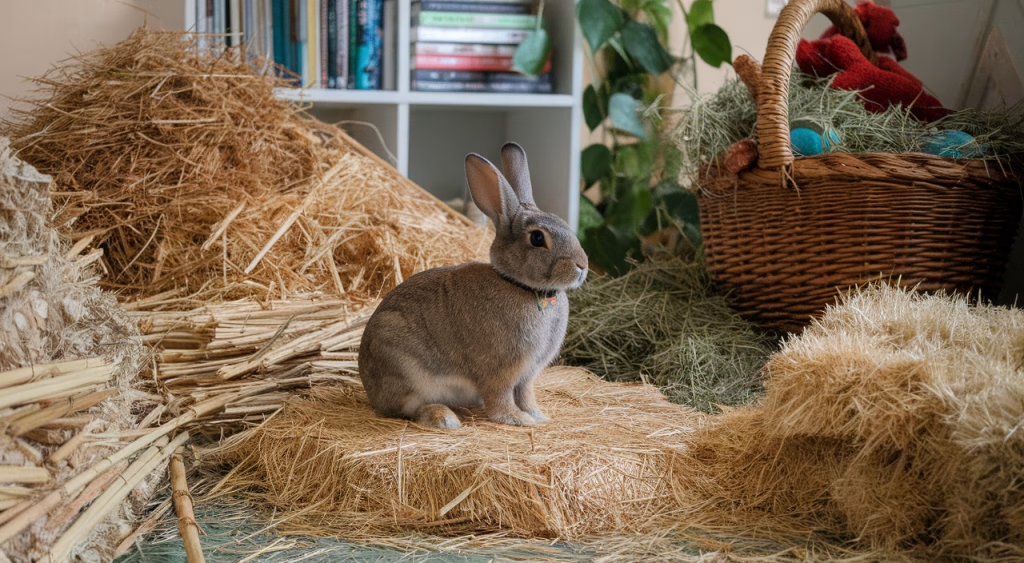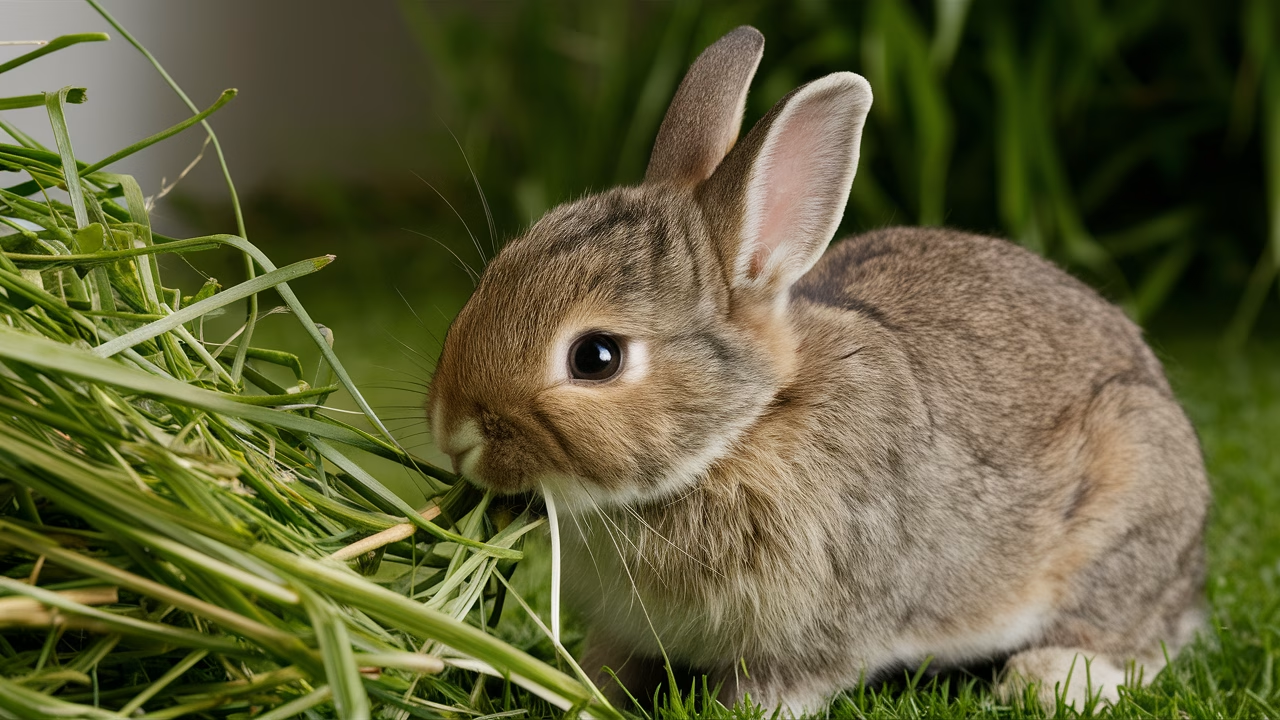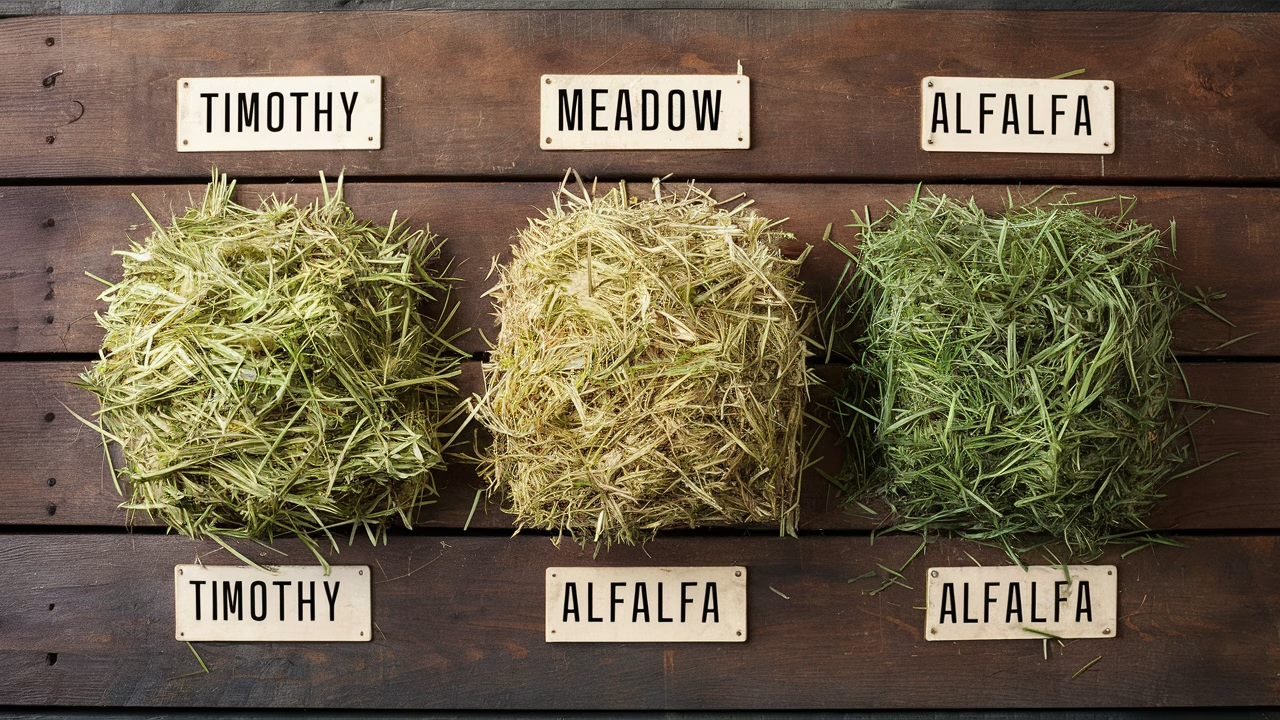Why Is Hay So Important for Bunnies’ Health?
Hay for bunnies is the cornerstone of a healthy rabbit diet. Without it, your bunny’s digestive system can falter, and their dental health may decline—sometimes with life-threatening consequences. But what makes hay so essential, and how much should your bunny eat each day?
- Hay aids digestion: It prevents gastrointestinal stasis, a common and dangerous condition in rabbits.
- Supports dental health: Rabbits’ teeth grow constantly, and hay naturally grinds them down.
- Should make up 80–90% of the diet: Hay is the primary food source—not a snack or filler.
- Not all hay is equal: Choose the best fresh grass hay for rabbits depending on age, size, and taste preference.
The Importance of Hay for Bunnies
Imagine life without fiber—it’s a nightmare for your intestines, right? Now take that discomfort and turn it into something far worse: for rabbits, inadequate fiber in the form of hay can lead to gastrointestinal stasis (GI stasis), a potentially deadly health emergency. But hay for bunnies does more than keep things moving; it’s also the silent guardian of your bunny’s constantly growing teeth.
Here’s what often happens: a well-meaning bunny owner fills the bowl with pellets and veggies but neglects hay. Soon, the rabbit becomes less active, eats less, and stops pooping regularly. Before long, they could be in trouble.
Hay is not an optional part of your bunny’s diet—it’s fundamental. Let’s explore why, and how to make sure your bunny gets exactly what they need.
Watch this quick video to understand why hay is a life-saver for bunnies:
Signs of Inadequate Hay Intake
How do you know if your bunny isn’t eating enough hay? Here are the red flags to look out for:
- Soft stools or diarrhea: A bunny lacking hay will produce fewer formed poops.
- Appetite changes: Your rabbit may ignore pellets or veggies, or stop eating altogether.
- Destructive chewing: If hay is lacking, bunnies often chew furniture or fabric to satisfy their need to gnaw.
- Sluggish behavior: A happy, hay-fed bunny is an active hopper. A hay-deficient one? Often lethargic.
Hay Intake Guidelines for Adult and Young Rabbits
Not all bunnies eat the same. Age, size, and energy levels change their hay needs dramatically. Understanding proper fresh hay intake is crucial for maintaining your rabbit’s health.
Adult Rabbits
For adult rabbits, unlimited access to hay is the gold standard. A medium-sized adult bunny (e.g., 5 pounds) may go through one to two handfuls per meal session, or a pile roughly the size of their body per day.
| Weight of Rabbit | Hay Amount (Daily) |
|---|---|
| 2–4 lbs | 1–1.5 cups (loosely packed) |
| 5–7 lbs | 2–3 cups |
| 8+ lbs | 4+ cups |
Young Rabbits
Baby bunnies love to chew—and they need to! Since their digestion is developing, young rabbits (<6 months) should get double the amount of hay compared to adults. Alfalfa hay is suitable for very young bunnies due to its higher protein and calcium content, but be cautious—too much can lead to obesity or urinary issues in adults.
Wondering what’s best for your young rabbit’s needs? Let’s look at that next…
Ensuring Hay Variety and Freshness
Bunnies, like people, appreciate variety—and the right type of hay can encourage better eating habits. Ever wondered what’s the best fresh grass hay for rabbits? It depends on your rabbit’s age, health, and taste preferences.
Top Hay Types for Your Bunny Diet
| Type of Hay | Benefits | Best For |
|---|---|---|
| Timothy Hay | High in fiber, low in calcium | Adult rabbits |
| Orchard Grass | Sweet smell, soft texture | Picky eaters |
| Meadow Hay | Mixed grasses, natural variety | Enrichment |
| Alfalfa Hay | High protein/calcium | Baby rabbits |
| Oat Hay | Crunchy texture, low sugar | Dental variety |
Expert Tip: Introduce 2–3 hays mixed together to prevent boredom. Replace daily to eliminate dust and mold concerns and ensure optimal fresh hay intake.
Optimal Dental Health and Hay
Unlike humans, rabbit teeth grow continuously. If they don’t wear down naturally through chewing, overgrown teeth can lead to pain, infections, and difficulty eating. That’s where hay comes to the rescue—it’s like a natural dental file for maintaining dental health in bunnies.
But what kinds of hay are best for maintaining dental health in bunnies? Choose coarse varieties like timothy and oat hay. Their long strands and resistance make rabbits chew more actively, filing down those pearly whites.
Comparison Chart: Hay vs. Pellets vs. Veggies
| Nutritional Element | Hay | Pellets | Veggies |
|---|---|---|---|
| Fiber | High | Moderate | Variable |
| Dental Grinding | Yes | Minimal | Minimal |
| Daily Quantity | Unlimited | 1/4 cup per 5 lbs | 1 cup per 2 lbs |
Which Animal Has the Largest Eyes Relative to Body Size? Meet the Incredible Tarsier
FAQs About Hay for Bunnies
1. Can my bunny eat only pellets instead of hay?
No. Pellets lack sufficient fiber and won’t maintain dental or digestive health. Hay for bunnies is non-negotiable.
2. What if my bunny refuses to eat hay?
Try introducing new varieties, hiding hay in toys, or offering fresher batches. Rabbits respond to curiosity and freshness when it comes to fresh hay intake.
3. Is alfalfa hay safe long-term?
Only for young, pregnant, or malnourished bunnies. For healthy adults, it’s too high in calcium and can lead to urinary problems.
4. How should I store hay?
Keep it in a cool, dry place in breathable containers. Avoid sealed plastic bags and direct sunlight to maintain the best fresh grass hay for rabbits.
5. How often should I replace hay?
Daily. Stale or moldy hay can be harmful. Refresh 1–2 times a day for best results and optimal fresh hay intake.
6. What kind of hay helps my bunny’s teeth the most?
Choose coarse-textured hays like Timothy, Oat, or Meadow hay to keep your bunny’s teeth properly ground down and support dental health in bunnies.
7. Can hay be harmful in any way?
If it’s dusty, moldy, or improperly stored, yes. Always inspect hay before placing it in your rabbit’s enclosure.





